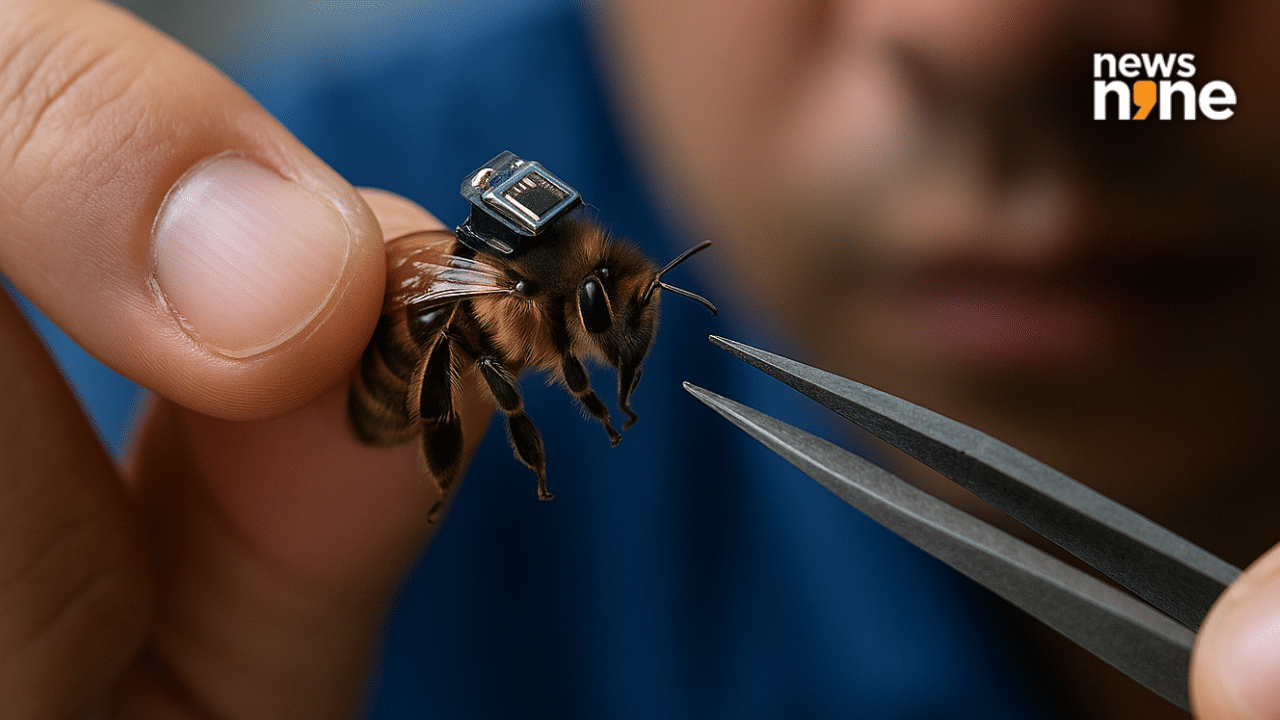New Delhi: In a development straight out of a dystopian Netflix series, researchers in China have built a tiny brain-controlling device that can guide the flight of a live bee. The chip, weighing only 74 milligrams, is now the lightest insect brain controller ever made. It is small enough to be carried by a honeybee, which usually hauls nectar weighing almost as much. Scientists say these “cyborg bees” could be used for military scouting, surveillance, or even rescue missions after disasters.
The work is being led by Professor Zhao Jieliang at the Beijing Institute of Technology. According to a report by the South China Morning Post, the project focuses on combining natural insect behavior with modern electronics to create mini flying robots that are part-living creatures.
World’s lightest insect brain chip
The controller is strapped onto a bee’s back and connects to its brain through three tiny needles. These send electrical pulses that tell the bee which direction to fly. In lab tests, the bees followed commands correctly 90 percent of the time. Compared to older systems that worked on beetles and cockroaches, this chip is far lighter and puts less stress on the insect, which helps them fly longer.
Earlier attempts by researchers in Singapore involved heavier chips that quickly tired the bugs out. Zhao’s team believes this new device could be a breakthrough, thanks to its lightweight construction and ability to mimic the parasitic fungus cordyceps, known for hijacking insect behavior. Zhao’s team used ultra-thin polymer film to print circuits as flexible as insect wings.
Not just bees: roaches and beetles too
The paper, published in the Chinese Journal of Mechanical Engineering on June 11, details how similar chips were also tested on cockroaches. The insects were able to trace paths set by researchers using the same technique. However, limitations remain. Bees still need wired power for longer use, and roaches can only handle 10 zaps before getting tired. Batteries add extra weight, which is a problem.
In their published paper, Zhao and his team wrote, “Insect-based robots inherit the superior mobility, camouflage capabilities and environmental adaptability of their biological hosts.” They added that such systems could be useful in urban combat, anti-terror operations, and even in earthquake-hit areas for search and rescue work.
Spy bugs or search bots?
While the potential uses are wide-ranging, this invention has raised some eyebrows. The idea of insect-sized surveillance tools that can slip through cracks and record without being noticed sparks privacy concerns. But researchers say the goal is to use nature’s own design for good.
